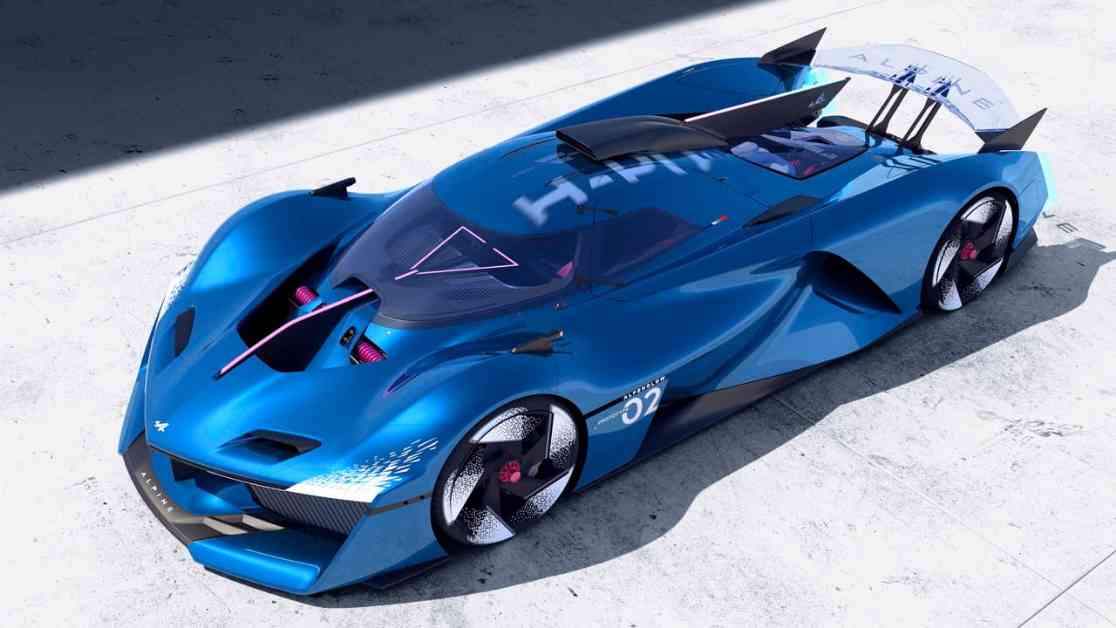Alpine has been working hard on a new innovation in the world of motorsport, the hydrogen-powered rolling prototype called the Alpenglow. This prototype features a hydrogen combustion engine, which is different from the hydrogen fuel cells used in other cars like the Toyota Mirai and Hyundai Nexo.
The latest version of the Alpenglow, the ‘Hy6’, was recently unveiled at the Paris Motor Show. This version comes equipped with a powerful 3.5-litre twin-turbo V6 engine that produces an impressive 740bhp and 568lb ft of torque. It can reach a maximum speed of 205 mph and is fueled by three 2.1kg hydrogen tanks that can store hydrogen at a pressure of up to 700 bars.
The development of the engine took over two years and was specifically designed to run on hydrogen. The engine operates similarly to a regular combustion engine, with fuel and air entering the intake manifold, compression in the pistons, ignition by the spark plugs, and combustion. However, hydrogen ignites differently than traditional fuels, requiring modifications to the combustion chamber to prevent abnormal combustions.
To address this issue, Alpine created a pre-ignition chamber with a pressure regulator to reduce the hydrogen pressure before injection into the combustion chamber. This technology allows for a smoother and more controlled combustion process.
One might wonder why Alpine didn’t opt for fuel cells instead of a combustion engine. The reason is that fuel cells operate at lower temperatures, leading to the need for larger radiators to dissipate heat. In contrast, combustion engines generate higher temperatures, allowing for more efficient radiator sizing and waste removal through exhaust pipes.
Another advantage of hydrogen combustion engines is their suitability for racing. These engines can provide the power, noise, and vibrancy that are characteristic of traditional racing engines, making them a promising option for motorsport applications.
In conclusion, Alpine’s new Hy6 engine represents a significant step forward in the development of hydrogen-powered vehicles. The technology behind this engine offers a glimpse into the future of sustainable and high-performance automotive engineering. What are your thoughts on Alpine’s innovative approach to hydrogen propulsion? Share your opinions below.



































































